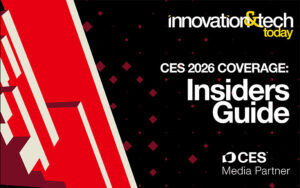Electric vehicle (EV) sales metrics plaster headlines, showing optimism of a gas-free future. Efforts like the Inflation Reduction Act (IRA) promised to install more chargers and support the jobs to do so. A logistical gap remains, as countless states still need more access. What does the U.S. need to mend infrastructure to empower EV adoption?
The State of U.S. EV Charging Infrastructure in 2024
Consumers and manufacturers must know how modern charging accessibility is doing before brainstorming ways to fix its oversights. Electrification is a global race, and China currently leads the charge with 10 million anticipated sales in 2024. If America wants to catch up, drivers need more chargers to deal with range anxiety.
Despite competition, American EV dealers are still moving units at an impressive rate. EV sales rose 55% in 2022 compared to 2021. Charging infrastructure’s abilities haven’t fully aligned with commuters’ expectations yet — not all fueling stations are as fast or convenient as filling tanks with gasoline. Some EV chargers have these qualities, but the current state shows U.S. charging stations have room to grow.
Infrastructure expansion will correlate with advancements in battery technology. They are streamlining, becoming denser and safer. Chargers perform better when supporting more efficient batteries. For example, stations may emit high frequencies that degrade the battery over time. Therefore, people will judge the charger’s effectiveness based on the battery’s state.
Data also suggests a growing interest in installing devices at home. After the COVID-19 pandemic, 84% of EV owners fuel up at home to avoid charging in public. Prices for this technology will decrease steadily with market saturation, making it more enticing to homeowners.
The Need for Expanded Policies
Tax rebates and incentives have been historically effective for sustainable tech. Governments have seen this with products like solar panels, and EVs are no different. The IRA included tax breaks, and many predetermined gift limits have been met. Inclusions like this, and projects like the Low Carbon Fuels Standards, must continue to convert people from gasoline to electric.
Sales necessitate charging expansion, but legislative engagement must do more to maintain momentum. The next phase for chargers is multimodal models. These fuel EVs and swap batteries if necessary, which will also help fleets, ride-hailing services, and public transit.
EV batteries will always have limitations and sustainability concerns with their concentrations of heavy metals and complex recycling measures. Policies must regulate charger design with swapping functionality to alleviate these burdens. When manufacturers are responsible for their batteries, drivers will worry less about battery life spans and personal responsibility for ethical disposal. Additionally, design-based regulations simplify permitting and zoning if they are updated together.
Grid modernization laws are also crucial in reinforcing EV charging infrastructure expansion. Progress stops if it can’t provide the power needed for a fully electric population. Collaboration between lawmakers and private organizations is necessary. EV and phone chargers have the same problem — every company uses a different charging cable. Standardized, cost-effective grid connections and docks will expedite charger deployment.
The Trending Movements for a Better Carbon Footprint
What social and corporate pushes are bettering charging infrastructure gaps?
Urban Creativity
Urban planners have a unique job, as city dwellers face infrastructure adoption obstacles, like minimal off-street parking. City designers are beginning to plan urban development around EV expansion, such as dedicating lanes to chargers or converting unused parking areas to help neighborhoods. Accessibility is vital for this driving demographic, which likely has shorter commutes.
Fast Charging to Deal With Range Anxiety
Rural communities and long-range drivers have different needs. They need fast charging speed or swappable batteries to keep going long distances without fear. These amenities must become more common and will push joint public-private efforts. Combining efforts will become more effective than allocating government and private funding to separate projects.
Vehicle-to-Grid Integration
The money should go to initiatives like vehicle-to-grid (V2G) buildout. It’s a no-brainer, primarily with renewable energy expansion. Consider communities making excess clean power to charge their vehicles. These generators can supplement the grid by plugging their car into a nearby charger to help other drivers. It’s a necessary trend as the grid upgrades to a more powerful version.
Cybersecurity and User Interface (UI) Enhancements
People interested in consumer technologies are becoming more aware of cybersecurity, including what they plug their EVs into. Chargers must uphold higher standards, or paranoia will grow about how easy it may be to compromise vehicles through charging infrastructure. One way to overcome this is by making the stations easy to navigate. Streamlining UI will please customers and increase trust.
Greener Chargers and Education
The final notable trend is making EVs even greener. Many buyers don’t buy an EV because they feel the electricity would be fossil fuel-based — not all of them use renewables. A charger’s eco-friendliness depends on the region’s grid electricity source. However, organizations must spread knowledge on what is powering the chargers so less misinformation damages electrification’s reputation.
Driving Across the Bridge
Misconceptions surround charging station availability, but development is still necessary. For the U.S. to support its citizens and be competitive, legislative advancements and stricter sustainability objectives must motivate corporations and governments. These strategies will solve gaps in EV charging infrastructure to forge a robust, electrified society.










